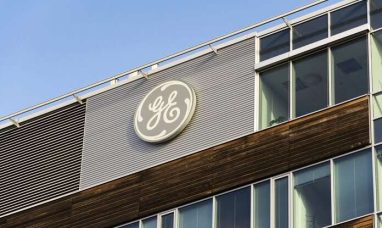Everyone should have observed the big swings in mega-cap stocks that have propelled the market upward by now. It all started with Microsoft’s investment in OpenAI, which led to the discovery of artificial intelligence. Readers of my posts on Meta (NASDAQ:META) up 140% and Alphabet (NASDAQ:GOOGL) up 33% could have benefited. Right now, it’s time to leave the mega-caps alone and hunt for new value assets that have gone unnoticed.
I’ve been doing research on small-cap stocks in recent weeks because they’ve been underperforming in the market for a while. The Russell 2000 has gained only 6.5% YTD, while the S&P 500 has gained 12.5%. The first small-cap firm I will discuss in this piece is Tecnoglass (NYSE:TGLS), a Colombian glass maker.
The focus on cost-cutting and the expansion of AI use cases boosted large-cap businesses’ short-term earnings growth. Small-cap businesses, on the other hand, have yet to benefit as much from AI as large-cap businesses and are still struggling in the present context of increased lending rates. Short-term profit growth of small caps was rarely lower than that of large caps over the last two decades.
Still, long-term earnings growth for small-size companies is promising and significantly better than for large-market corporations. This is natural because it is easier to grow a small firm than a huge one. Doubling the number of employees from 10 to 20 is doable, but doubling the number of employees from 100,000 to 200,000 is exceedingly impossible.
The valuation disparity between large and small stocks has grown even wider. The forward price-to-earnings ratio for the S&P 500 LargeCap is presently 18.5, compared to 13.5 for the S&P 600 Small Cap and S&P 400 Mid Cap. The forward p/e ratio of the MegaCap list reached 29.6. Alphabet (NASDAQ:AMZN), Amazon (NASDAQ:AMZN), Apple (NASDAQ:AAPL), Meta, Microsoft (NASDAQ:MSFT), Netflix (NASDAQ:NFLX), Nvidia (NASDAQ:NVDA), and Tesla (NASDAQ:TSLA) are among the MegaCaps. History suggests that small-cap stocks rarely trade at a lower price-to-earnings ratio than large-cap stocks. According to the current environment, there are more investment opportunities in small enterprises.
Warren Buffett has said numerous times over his career:
“Begin by going through a large number of organizations; focus on smaller companies because there is a greater risk that one will be overlooked.”
In my small cap research, I concentrated on companies with market capitalizations ranging from $500 million to $6 billion. This corresponds to the size of enterprises in the S&P 600 Small Cap index, which ranges from $98 million to $6.8 billion.
Key Points:
– Strong free cash flow (Low Price to Free Cash Flow) –
– Solid financial position (high current ratio)
– A high return on invested capital and a high return on assets (preferably greater than 9%).
Tecnoglass
Tecnoglass has a market capitalization of $2.1 billion.
Price/Free Cash Flow Ratio: 13.3 / FWD 9.5
ROIC: 33% / AVG 5y 12.9%
ROA: 22% / AVG 5y 7.2%
The current ratio is 2.05.
Tecnoglass is a Colombian manufacturer of architectural glass, windows, and aluminum-based products. They are a vertically integrated manufacturer, which means they control the entire manufacturing process, from raw materials to completed products. Vertical integration provides important benefits such as cost-efficiency, shorter lead times, quality control, and ensuring products match industry standards.
America accounts for more than 90% of Tecnoglass’ revenue. Products from the company are used in commercial, residential, and institutional structures. While revenue increased by 50% in the most recent quarter, backlog increased by $776 million in the first quarter, indicating high demand for the company’s products.
To meet the increasing demand, Tecnoglass has increased its capacity. The expanded capacity has the potential to boost annual sales to more than $950 million, up from $716 million in 2022.
The Paramount Miami World Center was one of their projects.
Surprisingly, with a price-to-earnings ratio of only 11, Tecnoglass is not considered a growth firm. When compared to several peers chosen by Seeking Alpha, the stock is selling lower than the others with a comparable market cap
Furthermore, the company expanded 50% in the first quarter and is growing much faster than its peers, but none of this is reflected in the valuation. Of course, growth normalization is possible in the next few years, but a P/E of 11 is extraordinarily low given that the company can still enhance its operating leverage.
Furthermore, Tecnoglass’ profit margin of 23% is exceptional. Again, far outperforming others in the industry.
Tecno glass’s CFO stated on the company’s most recent earnings call, 23Q1:
“So anything above what we’re doing is going to come from operating leverage and further automation. I think we – over time, we can still gain maybe another 100 bps, 150 bps depending on the level of operating leverage that we can get. But we’ve been pleasantly surprised over the last couple of quarters, obviously, more to come, but the expectation is that we will be able to sustain what we’ve been doing and depending on operating leverage, hopefully, gain a little bit more.”
If Tecnoglass can enhance its operating leverage, higher gross margins are conceivable. However, the most critical factor and key to future success is sustainability in gross margins.
Tecnoglass is strengthening its balance sheet quarterly through solid cash generation while also growing the business. The money can be used in a variety of ways. To begin, as the backlog grows, new investments in capacity growth must be considered. More investment will be made if the backlog continues to increase at its current rate, according to the CFO on the Q1 results call. Furthermore, debt reduction is an option, although it is important to note that leverage (Net Debt/ Adjusted EBITDA) has decreased from 3x in 2017 to 0.1x presently. As a result, debt repayment should not be a top concern right now. Finally, cash flow will be used to pay dividends. The dividend yield is 0.83%, but it is rapidly increasing, with the most recent increase of 20%.
Because the company is setting new records in revenue and free cash flow, investors could expect the dividend to recover to pre-COVID levels as soon as 2024. During COVID, several huge structures had to be postponed, which harmed the glass manufacturer’s profitability. The reversal ushers in a new era of dividend growth.
Bottom Line
Tecnoglass is an excellent illustration of how wonderful little firms can be hidden in the market. Given the remarkable development the company has made in recent years, the stock is trading at a relatively low price. Modernization benefits the corporation in Florida (particularly Miami), New York, and Texas.
I believe that as cities grow, they will adopt larger glass buildings to conserve space and increase light incidence. In a struggling housing market, Tecnoglass products are in high demand. A recovery in the real estate sector could increase demand for the company. The stock provides more upside in terms of equity appreciation as well as dividend increases along the road. Tecnoglass appears to be a low-risk, medium-reward compounder over the next decade. The balance sheet has been significantly de-risked and is now stronger than before. The business’s vertical integration is fantastic and will reap numerous benefits in the future.
A major capacity expansion, followed by a decline in demand for their products, could represent a risk to my theory. Nonetheless, my first impression of the management team is that they are thoughtful in all that they do. Although the company continues to gain market share, competition might always increase. The company’s vertical integration will make it difficult to compete with Tecnoglass.
I don’t have a position yet because I found the company on my own. However, while conducting the study, I became interested in starting a position. I give the company a ‘Strong Buy’ recommendation.
Featured Image: Freepik @ fanjianhua









